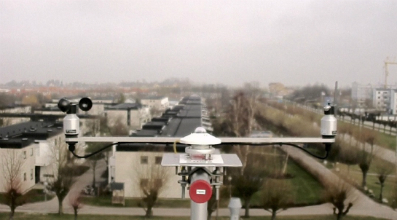Pyranometers Save Heating Costs in Swedish Buildings
Published: Friday, December 19, 2014
Saving money by efficient heating control in buildings is an increasing field of interest for housing companies. One aspect of this is to take local weather conditions into account, instead of just relying on thermostats in each apartment to control the heat, which is a reactive and slow method. Companies are now starting to use more proactive methods, such as taking solar radiation and wind into consideration when controlling the heat input.
A traditional method of doing this is by using detailed weather forecasts from meteorological institutes, to predict weather changes that could allow reductions of the heat into buildings. For instance, if the prognosis predicts that the wind will decrease and the solar radiation will increase, the heat into the buildings can be reduced to meet this much earlier than if one is relying on thermostats.
The problem with these forecasts is that they are very expensive. According to Patrik Håkansson, control engineer at the municipal housing company in the city of Lund in Southern Sweden, they are also not always accurate. Patrik and his colleagues have instead chosen to collect their own weather data. The company has set up a weather station on the roof of one of the buildings that they manage.
This weather station is the third of its kind to be implemented by Patrik, after proven cost savings in similar projects in Landskrona and Helsingborg. The installation in Helsingborg has already attracted the attention of the Swedish Association of Municipal Housing Companies, SABO, which interviewed Mr. Håkansson on the advantages and disadvantages of the weather station in the heating control systems of municipal buildings. For those who can understand Swedish, the video can be watched at http://www.youtube.com/watch?v=ThUuuXFFDeQ
 The Helsingborg station measures temperature, wind speed and direction, pressure, humidity, rain intensity and solar radiation. Data from the sensors are processed by software that sends commands to a computer that regulates the incoming heat, based on the local weather situation.
The Helsingborg station measures temperature, wind speed and direction, pressure, humidity, rain intensity and solar radiation. Data from the sensors are processed by software that sends commands to a computer that regulates the incoming heat, based on the local weather situation.
The Kipp & Zonen CMP 3 pyranometer was chosen for the project in Helsingborg, for the quality of the instrument and its proven track record. However, when the City of Lund purchased its weather station, the SMP3 had become available and proved to be an even better solution; thanks to the built-in electronics and the match with the PLC system used in the building automation.